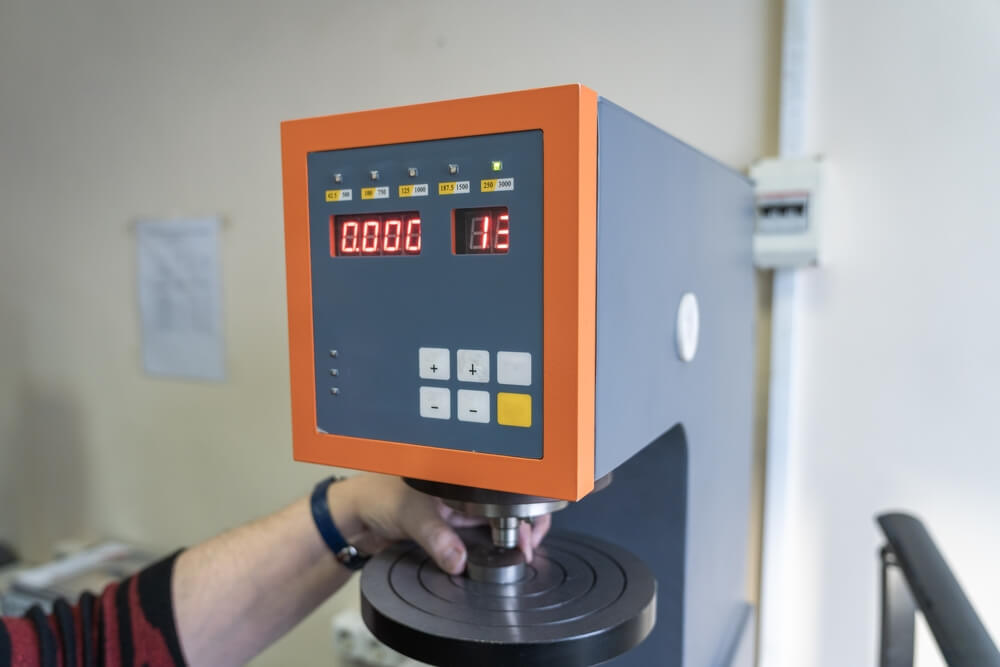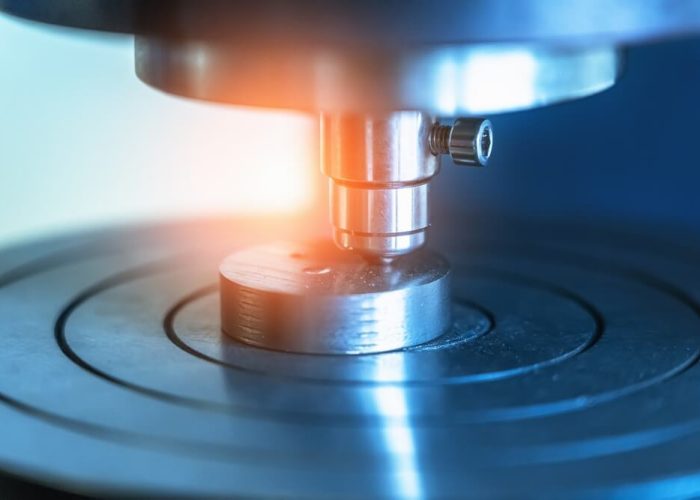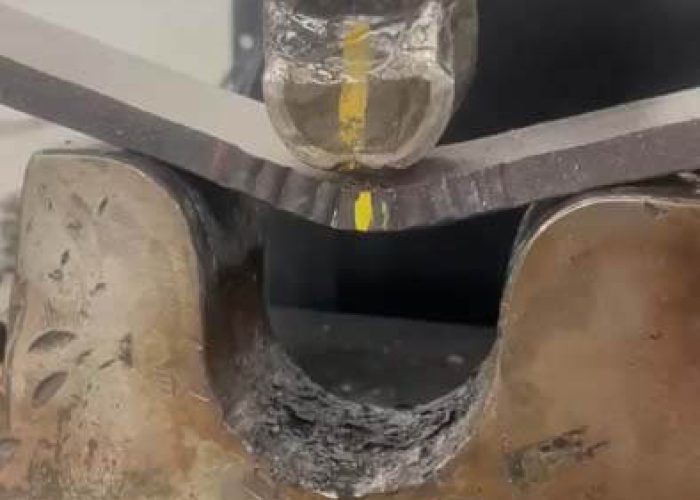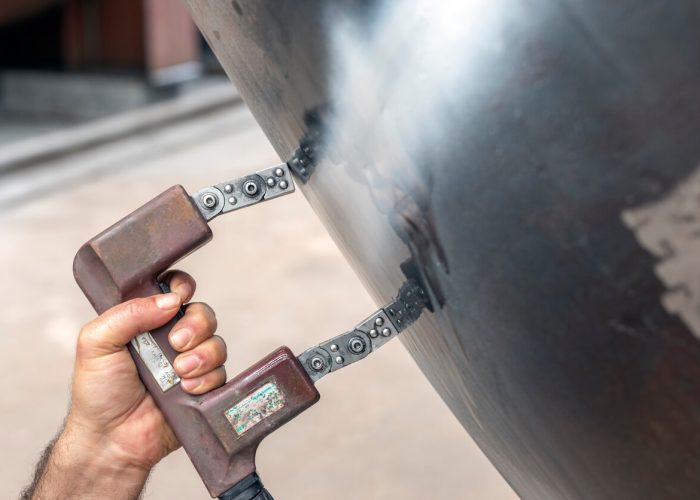Why Metallurgical Testing Is a Must Before Starting Your Next Project
Metallurgical Testing becomes a necessity because you should not risk skipping it. We have observed numerous project collapses because material problems could have been detected prior to execution. The unanticipated failure of metal components results in disastrous outcomes which surpass mere financial damage. The microscopic inspection detects problems that cannot be seen by eyes including material structure faults and thermal treatment errors and chemical composition abnormalities. The project’s structural soundness will eventually break down because of hidden defects that initially seem inactive.

Key Points
Structural failures become catastrophic when metallurgical testing detects material weaknesses and defects. The testing process costs between 0.5-3% of project expenses yet avoids remediation costs which can reach 15 times higher. The process of material verification helps companies follow safety regulations which protects their insurance coverage while avoiding expensive recall procedures. A microstructural analysis provides vital details about manufacturing steps and thermal treatment success and failure patterns. Companies with metallurgical testing documentation achieve lower insurance premium rates that amount to 8-12% less than their competitors.
The Hidden Dangers of Skipping Material Verification
Manufacturers who skip metallurgical verification tests create opportunities for substantial risks which become apparent only after equipment failures occur. The failures take different forms which include component fractures as well as accelerated corrosion and unexpected material deformation when subjected to load. The absence of metallurgical testing leaves your operations vulnerable because materials will only show their defects when failure makes the expensive truth visible.
We have seen many instances where exchanging materials led to major operational problems. Verification absence means operating under incorrect assumptions about material composition and properties which do not reflect actual conditions. The breakdowns created by insufficient testing extend past the immediate point of mechanical failure. Materials that fail to meet compliance standards lead to safety certification loss while eliminating insurance benefits and forcing companies to spend money on product recall procedures. The financial costs of noncompliance exceed the initial testing costs by many orders of magnitude. Our industrial community depends on proper verification to fulfill both regulatory requirements and quality and reliability standards. Through complete failure analysis services at failure analysis organizations can discover equipment problem origins and establish methods to stop such problems from recurring.
Key Metallurgical Tests That Protect Your Investment
Three critical metallurgical tests serve to protect capital investments in metal components and structures which we implement.
Material Integrity Analysis checks for internal defects and mechanical properties through its methods while Microstructure Evaluation Testing evaluates grain boundaries and phase distributions to determine performance characteristics.
The verification test for corrosion resistance determines how materials respond to environmental deterioration thus preventing early system breakdowns while increasing operational lifespan in harsh environments.
Our complete approach features fracture mode analysis to detect essential failure mechanisms which prevent upcoming structural problems.
Material Integrity Analysis
The foundation of successful metallurgical testing programs for critical industrial investments relies on Material integrity analysis.
We conduct microstructural structural analysis through advanced analytical methods which helps prevent failures from happening in the first place.
Our thorough approach includes:
- The electron microscopy tool enables researchers to study grain boundaries and inclusions and phase distributions that could reduce performance.
- The analysis of fracture mechanics allows researchers to determine material responses to stress while predicting operational failure modes.
- Through compositional mapping experts can detect both elemental distributions and potential contamination zones which trigger corrosion or embrittlement.
The evaluation methods allow us to build material integrity benchmarks and discover minor degradation mechanisms.
Microstructure Evaluation Testing
A detailed microstructure evaluation testing process serves as the base for strong metallurgical analysis systems which protect industrial equipment from untimely breakdown. The laboratory performs advanced microscopy methods starting with optical metallography then proceeds to SEM and TEM to inspect your material microstructure.
The analysis provides essential information regarding processing background together with heat treatment assessment and failure risk detection that cannot be seen through standard mechanical testing methods. We can stop failures from happening by detecting abnormal grain growth together with harmful precipitates and microstructural degradation before production starts.
Our team interprets complex microstructural information to deliver functional data which directs material selection choices and processing parameter optimizations. The microscopic material structure analysis we perform ensures your project maintains both structural integrity and operational safety and long-term reliability which proves valuable throughout your asset’s entire operational period.
Corrosion Resistance Verification
Your materials endure persistent degradation mechanisms while operating in chemically aggressive environments which quickly destroy structural integrity until they result in catastrophic failures.
We conduct thorough corrosion testing to validate material performance under specific environmental challenges prior to their deployment.
We conduct a series of tests to verify material performance through:
- Electrochemical impedance spectroscopy (EIS) analyzes corrosion rates along with protective coating efficiency measurement
- The ASTM B117 salt spray testing evaluates pitting resistance and coating degradation through accelerated testing methods.
- The assessment determines bimetallic corrosion potential between different materials.
The testing procedures deliver crucial data needed to choose suitable alloys together with protective systems and schedule maintenance intervals.
Our team will help you select perfect materials that combine corrosion resistance with mechanical characteristics for enduring the complete designed service duration.
Testing Ensures Projects Stay on Track and Avoid Costly Failures
The direct relationship between successful engineering projects and metallurgical testing makes it an essential risk reduction tool in engineering projects.
Numerous instances demonstrate that omitting testing resulted in disastrous implementation failures which forced production stops and necessitated design modifications and caused major financial expenses.
Our testing capabilities detect material flaws and structural defects in the early stages before they become permanent in finished construction projects.
Project costs decrease by 15-30% through this proactive approach instead of requiring costly reactive solutions.
Our thorough testing procedures enhance stakeholder trust while maintaining regulatory standards.
Our project timeline becomes more efficient when we add testing because it blocks future delays.
The expense of testing produces major savings through decreased rework activities alongside longer component lifespans.
The testing process provides complete material testing services which reveal essential metallurgical properties for ensuring structures handle expected operational loads.
Regulatory Compliance: Meeting Industry Standards Through Testing
The fundamental reason for metallurgical testing emerges from regulatory requirements that force companies to follow industry standards to maintain operational safety while keeping projects viable. The use of laboratories with [ASME certifications] proves our commitment to fulfilling strict industry standards and regulatory requirements for project components.
Case Studies: When Material Failures Led to Disaster
History shows that poor metallurgical testing has led to multiple fatal engineering failures which serve as important professional lessons for us. The 1986 Challenger disaster happened because O-ring seals ruptured unexpectedly when temperatures dropped below their safe operating range which testing could have revealed as dangerous. The 1980 oil platform disaster which killed 123 workers occurred because of fatigue cracks in bracing structures that would have been detectable through proper metallurgical analysis.
The 1994 Japan Airlines Flight 123 crash happened because of poor repair methods and material fatigue that failed to show signs of trouble. Metallurgical assessments performed extensively would have avoided these tragic accidents.
These historical occurrences remain important warnings for our present community. Materials testing that we cut back on creates risks to both structures and human lives together with damage to our shared reputation. Standardized testing methods like ASTM E1820 would have revealed structural material weaknesses which could have prevented major failures.
Cost-Benefit Analysis of Comprehensive Metallurgical Testing
Organizations need to evaluate financial aspects of testing protocols in addition to the unquantifiable human losses from metallurgical failures.
Our expense-benefit evaluation shows that full testing delivers important value to investments.
The financial assessment of metallurgical testing reveals the following:
- The cost of testing represents 0.5-3% of project expenses but remediation efforts after failures become 10-15 times more expensive than testing costs.
- Litigation Avoidance – Material failures often trigger costly legal proceedings, with settlements averaging $2-5 million for industrial applications.
- Companies that prove their testing methods receive an 8-12% discount on liability premiums which generates long-term financial gains throughout project development.
Early implementation of proper testing methods leads to superior returns on investment because it prevents costly disasters.
The implementation of microscopic examination techniques enables companies to find structural flaws which could result in field failures.
Choosing a Suitable Testing Organization to Fulfill Your Project Requirements
When projects move from planning to implementation stage the decision to pick a suitable testing organization determines both product quality standards and final project success.
The evaluation process for laboratory selection should focus on their accreditation status and technical expertise and equipment capabilities and industry reputation.
Companies seeking testing services should look for partners with ISO/IEC 17025 certification and domain expertise matching their metallurgical requirements.
Businesses that provide complete testing process consultation yield superior value compared to those who deliver basic test data.
Before making any decision you should request sample reports and verify the testing duration and confirm their ability to work with your specified materials.
Your testing partner must act as an additional technical resource which delivers useful information that prevents costly failures and enhances material quality.
Look for testing services from PJLA accredited labs to obtain reliable and accurate and traceable metallurgical testing results.
Frequently Asked Questions
How Long Does Typical Metallurgical Testing Take to Complete?
Metallurgical testing durations range from one week to four weeks according to the complexity level and sample preparation requirements and analysis needs for material validation in your project.
Can Testing Be Performed On-Site or Only in Laboratories?
Portable equipment allows us to perform specific metallurgical tests at the site while laboratory facilities with specialized instruments remain necessary for precise microstructural analysis and advanced property characterization.
Are There Non-Destructive Testing Options for Irreplaceable Components?
Our testing services include non-destructive inspection methods of ultrasonic, radiographic, eddy current and magnetic particle testing that help protect valuable components while generating vital metallurgical information.
What is the Recommended Frequency for Materials Testing Throughout Long Projects?
The recommended testing period for materials spans from six months to one year but the exact interval depends on environmental exposure along with loading conditions and regulatory needs. The assessment of critical components needs to occur more frequently to maintain structural integrity.
What Qualifications Should Metallurgical Testing Technicians Possess?
The personnel conducting metallurgical testing should hold formal materials science education combined with specialized certifications and practical laboratory experience and knowledge of ASTM standards. The technicians require analytical competencies to properly interpret advanced metallurgical information.
Takeaway
The implementation of metallurgical testing stands essential for engineering practices that maintain responsibility. The implementation of extensive material verification protocols helps reduce catastrophic failure risks while ensuring regulatory requirements and maximizing material performance. The cost savings from testing exceed the costs of remediation work and potential legal liabilities. We need to choose testing partners who possess the required expertise to handle our particular materials while providing swift and correct analysis across the entire project duration.



